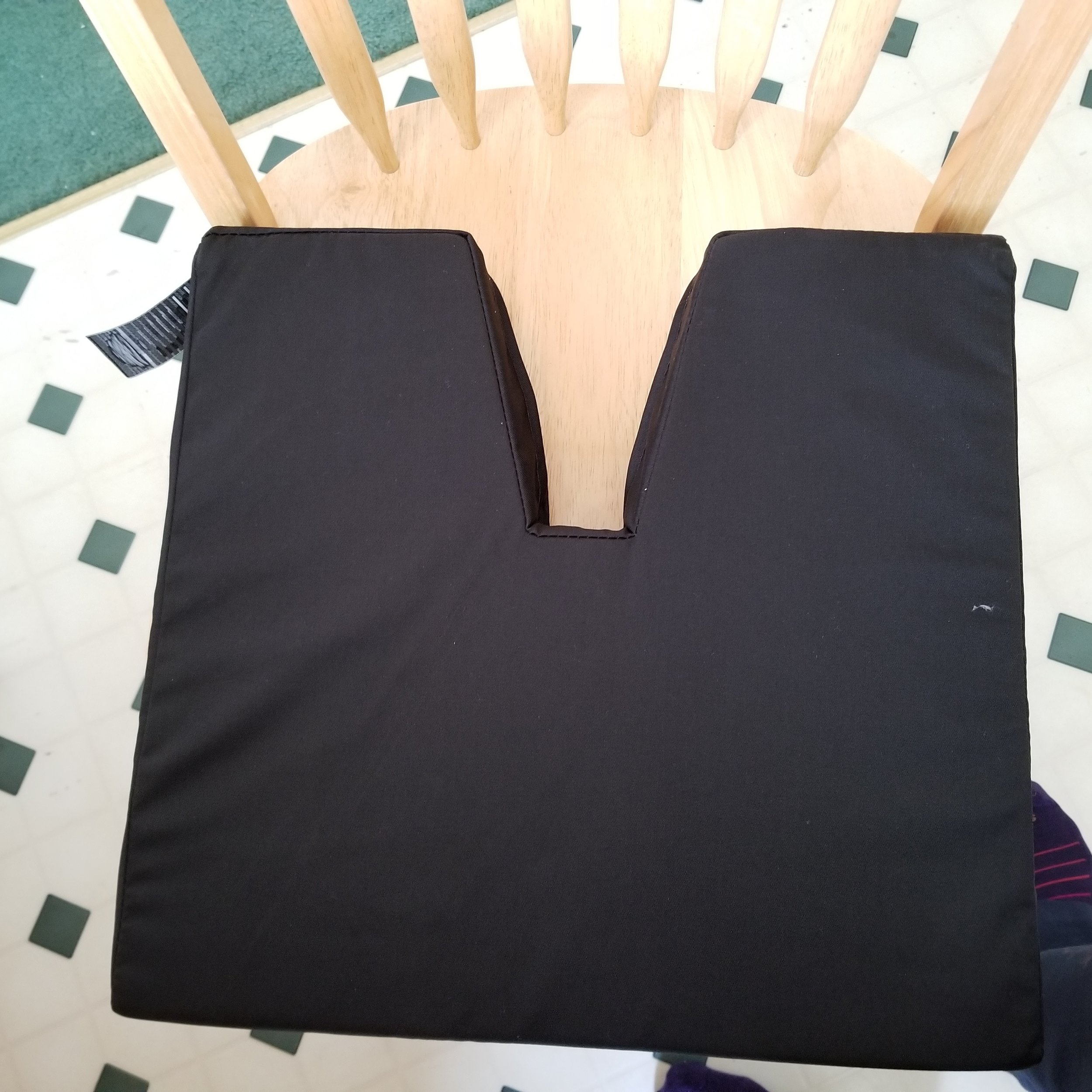As some of you know, I injured my back a couple of weeks ago. No, I wasn’t doing anything really cool like one of our awesome Iaido or Jodo kata, or going really wild on the cajón. I was simply sitting poorly at my desk and twisted funny when I got up to grab something from the printer. That’s when I felt a terrible twinge in my lower back. Next thing I knew, my body completely closed in and I could barely walk.
Thankfully, I was able to see my chiropractor the following day for an emergency adjustment. He said that I completely jammed up my sacral region. I then compounded things by still using my active sitting discs while doubled up in pain for an additional day, thus aggravating my coccyx (tailbone) while sitting.
“This isn’t going to feel better right away,” he told me. “It will take a few adjustments.” He sent me hobbling off with the following advice, “Keep moving and try to avoid sitting as much as you can.” Well, considering that I need to sit at two of my instruments and work on a computer quite a bit, adjustments needed to be made.
Modifying the Studio for a Back Injury
The first thing that I rolled out of the studio was my exercise ball, which I used as my teaching chair. Next, I raised the stand for my digital piano so that I could play from standing. I spend half my time teaching from standing, so that wasn’t a big deal. However, I needed to come up with a different way to rest my muscles during lessons somehow.
I discovered during one of my shorter ushering shifts was that kneeling and going in and out of seiza was perfectly fine for my back. Seiza is the formal Japanese way of sitting, which we use in martial arts training. It’s more of a kneeling sit, although our buttocks float over our ankles. So teaching from kneeling or seiza made the afternoon and evening lessons go well. And stretching. Lots of stretching. I used these sacral release stretches quit a bit.
I’ve been getting into Child’s pose more regularly since my back injury. Credit: Iveto
My trusty Dr. Ho and Maestro’s old infrared pad have been a great help in the healing process. When I’m out running errands or working at one of my part-time jobs, I use Icy Hot patches.
Five days after my injury, I bought a Coccyx wedge to use in the car. I thought I could use it in the office and studio, but half the time, the wedge went flying off the seat because I move so much.
Coccyx cushion. Credit: R-M Arca.
One week after my back injury, I bought a kneeling chair from Staples to use in the office and studio. Too bad I got rid of my original chair a few years back. I am sitting in this one properly though, which is a huge improvement from last time.
Now that I’m using the kneeling chair properly (no slouching), things are going swimmingly. Credit: R-M Arca.
I’m in the process of building up my sitting endurance at the piano and cajón. I sit more or less properly at my instruments, so the only big change is that I still need to do short practice sessions with time to do sacral release stretches in between.
It was extremely easy to reconfigure my piano studio in such as way that I could take it easy on my back. Credit: R-M Arca.
Modifying Budo Training with a Back Injury
My chiropractor and massage therapist probably got tired of me asking, “When can I go back to training?” One visit, my chiropractor asked me describe the movements involved when we train. He was already grimacing when I started to show how we unsheathe our swords. I promptly stopped before my back said, “Don’t make me do sayabiki!”
Then, I tried to slowly demonstrate Uke nagashi, our third Iaido kata from the seitei set:
He stopped me very quickly and told me hold off until my back had healed some more. “No twisting.”
I have had to make myself content with practising my footwork and moving in and out of seiza. I have also been drilling small sections in my kata, such as o-chiburi, that don’t involve me to change directions. My visualization isn’t the greatest, but I’ve been mentally reviewing my troublespots and asking sensei questions every few days about something I’ve noticed or read.
However, the main way that I’ve been keeping up with training is studying. I’ve got years’ worth of notes to review, as well as manuals for the four marital arts we practice (Iaido, Jodo, Hyoho Niten Ichi Ryu, and Choken Battojutsu Kageryu). Plus, there are always videos featuring some of of our sensei that I can watch.
Today, my chiropractor cleared me to ease myself back into regular training. I have a feeling that I’ll be doing a lot of solo practice at “Tai Chi slow” speed, taking time to dissect every movement for the first little while.
Lessons Learned from Injuring my Back
If anything, hurting my back has given me the opportunity to assess and adjust how I move and sit. During the first few days, I really had to break down how I did things like get on or off my bed into small segments. I am certainly sitting and getting on and off chairs more carefully these days.
I have definitely become more mindful of my body’s state as a result. Being more mindful can only be good, right?





